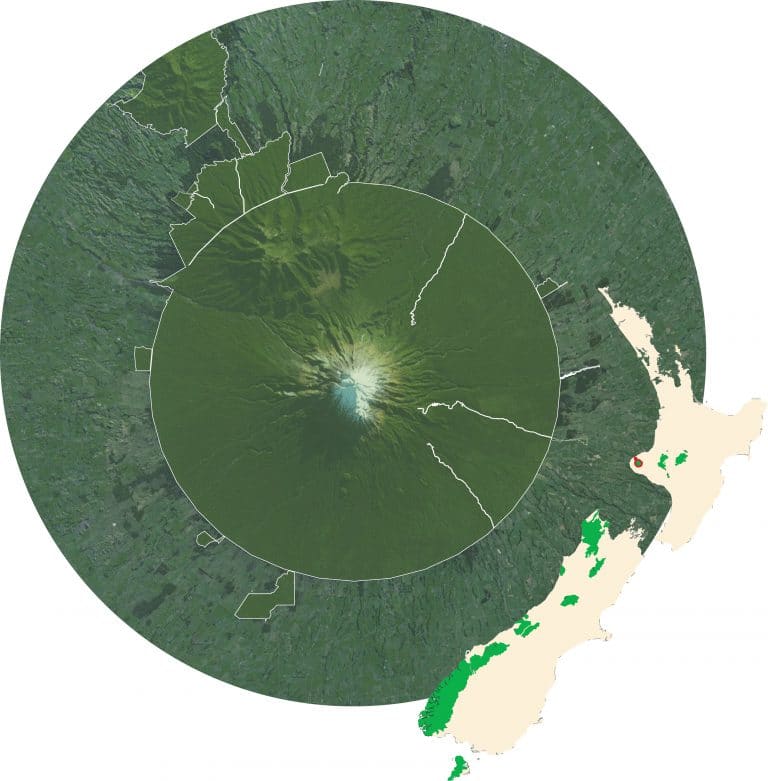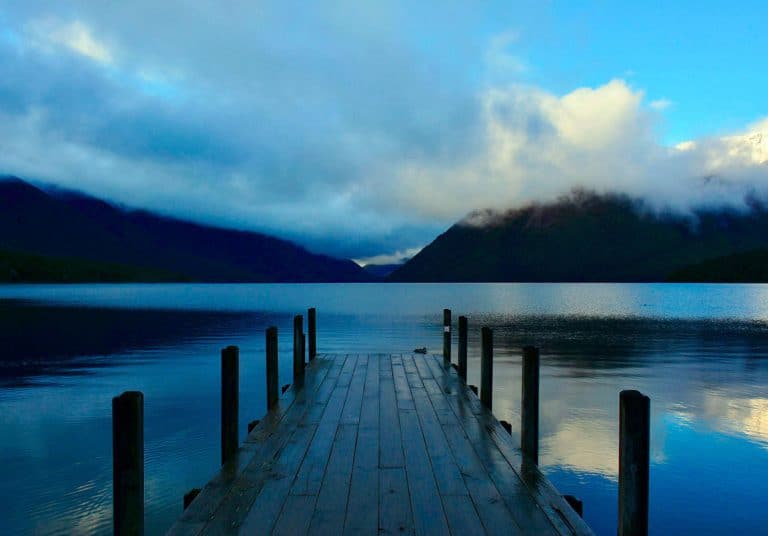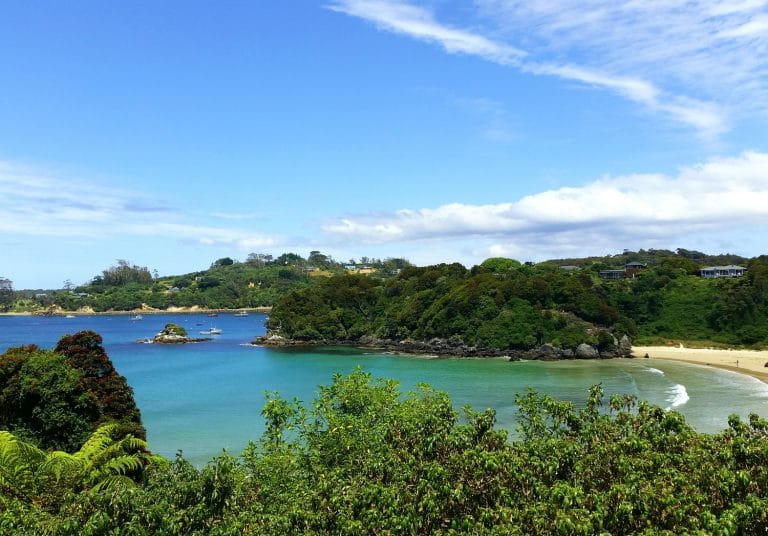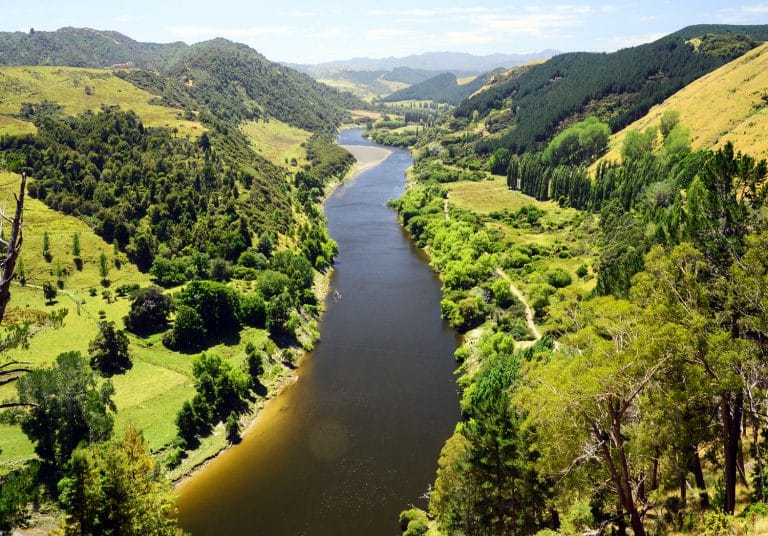Nelson Lakes National Park was established in 1952 and as its name suggests has many lakes both big and small. The crystal clear waters of the deep lakes at this northern tip of the South Island of New Zealand reflect the immense mountain…
Heaphy
In 1840 the surveyor Charles Heaphy painted this watercolour of Mount Taranaki. The painting places center stage the mountain’s perfect conical form, that is ringed with forest and a foreground made up of flat, green land. It portrays to a prospective settler an empty, fertile land lying in wait of European hands to transform it from wilderness into cultivated farmland. This form of painting, known as ‘boosterism’ actively sold the prospect of settlement ton people living on the other side of the globe.
Heaphy, Charles, 1820-1881 :Mt Egmont from the southward, September 1840
Image © National Library of New Zealand




